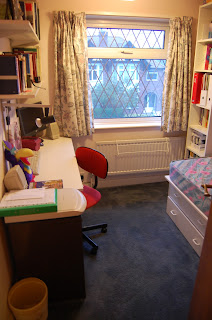Here is some research done over the summer about the band Snow Patrol, exploring their videos and the areas of theme, representation, image and visual style.
Music Video Research – Snow Patrol
Spanning three albums (and one single as yet unreleased on album) the most obvious themes and conventions in Snow Patrol’s videos are dark lighting and the appearance of the band playing – or at least some of them: while the whole do not feature in every video, lead singer Gary Lightbody does. Generally the videos are filmed at night, or with the band playing in plain, dark warehouse-like locations. In videos that do not directly follow these themes the feel is still the same, “Chocolate” for example shows a dystopian, industrial future and, while not specifically dark, the aesthetic is still very bleak. These styles mirror the alternative-rock style of their music and it’s often bleak mood. Another interesting way they identify themselves comes in the video for “If There’s a Rocket Tie Me To It” where they use a scene of origami stars mimicking the corresponding album cover, an important connection that helps present the band’s whole output as one package.
One of the biggest changes in the videos’ style is an improvement in their professionalism. Quality of film improves as does their visual relevance to the song lyrics; for example, while the mood of “Chocolate” is accurate, the story of the video has very little to do with the song itself whereas in “Take back the City” (a much later video) the link is much more noticeable, focusing on footage of a night in the city, as do the lyrics. This presumably is because with the band’s increased popularity came more money and influence to use better directors and producers. Also, as the band’s music becomes less gritty and more polished/well-produced so does their appearance in videos: from the casual, everyday indie look in one of their first videos “Spitting Games” to matching white suits in “Just Say Yes”, their latest video and a much more electronic, pop-influenced song. This video also abandons the darkness seen so much earlier on to better compliment the more upbeat music.
As has already been mentioned the main recurring visual theme is a gritty darkness of setting and lighting extending all the way up to the band’s most recent videos. Also, it is worth noticing that whenever the band is shown playing in the videos they are always accompanied by their full gear (instruments, amps, microphones, stage area) to almost recreate a live gig dynamic: “Crack the Shutters” is filmed almost entirely as a concert with the band playing to the crowd, although that crowd is choreographed in their movements. The visual image of the band themselves is represented in the videos by their clothing, either casual like in “Spitting Games” or dark in “You’re All I Have”. Apart from the sometimes uniform darkness they do not make themselves up in any other ways (hair, facial make-up, etc). This on-screen representation of their alt-rock, down to earth musical style changes only when their music does the same in “Just Say yes”.
In all of Snow Patrol’s videos the editing speed is mainly fast - although it is slightly slower in softer, slower songs - which reflects the tempo of the music and also helps keep the video exciting. The mix of close-ups, mid and long shots if fairly broad although close-ups are used quite frequently to show emotion in the faces of the band members that inevitably reflects the music they are playing. Noticeable effects are used quite sparingly in most of the videos although in “Spitting Games” and “You’re All I Have” freeze frames and lighting effects are used respectively. This is probably not in response to the lyrics of the song but in order to give the videos another level of interest and some individuality, like the music itself.
Only once is there a reference to another media text in all Snow Patrol’s videos and this is to the film Spider Man in “Signal Fire” because the song was used in the soundtrack to that film.














































